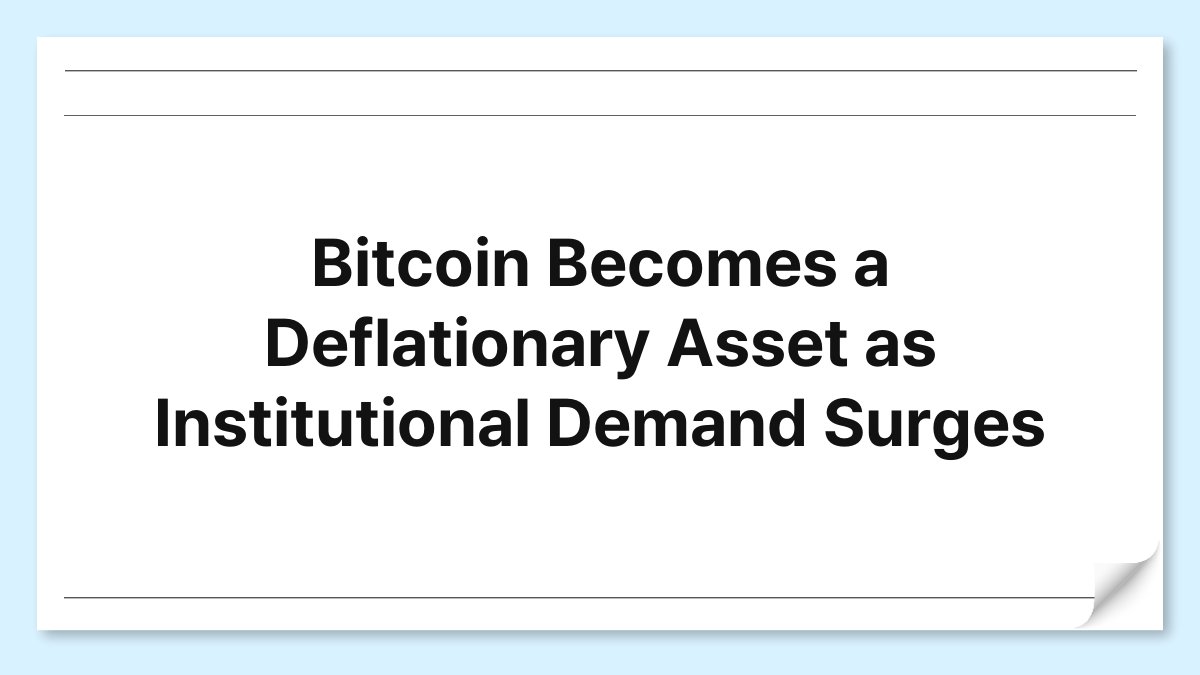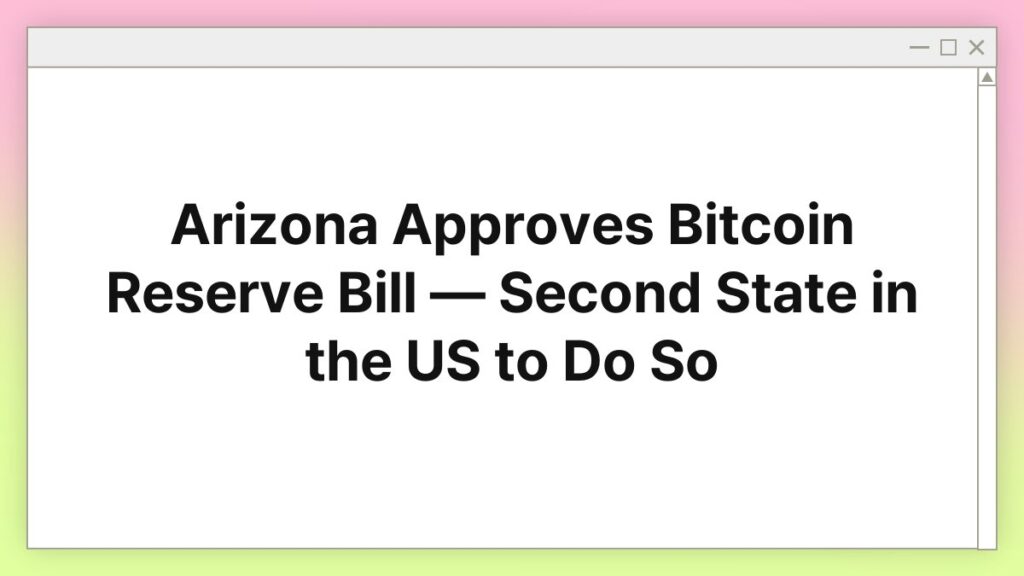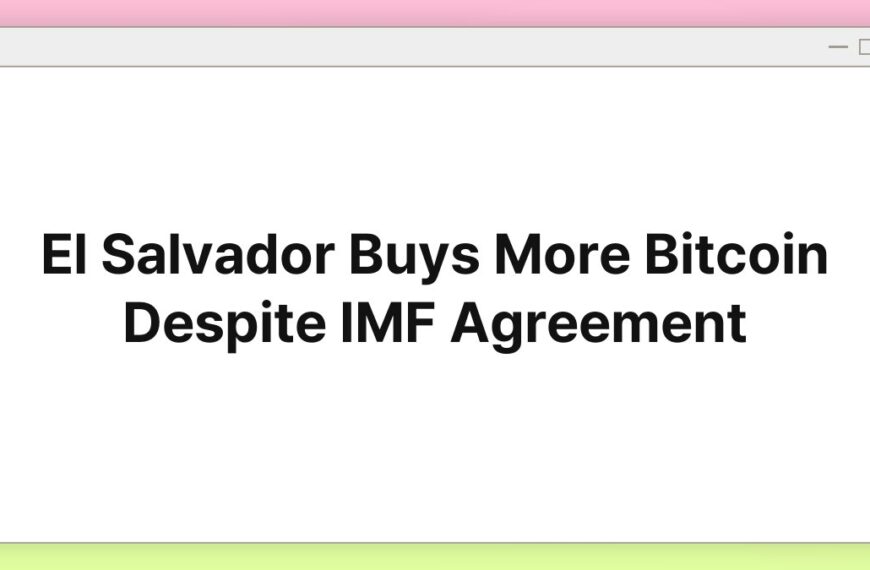[K-Bridge/Jay Son] Bitcoin’s recent surge in institutional demand has led to a significant shift in its perception as a deflationary asset.
The increasing interest from large investors, including hedge funds and corporations, has created a scarcity effect, driving up the value of Bitcoin while reducing its supply in the market.
This phenomenon raises questions about the long-term implications for both the cryptocurrency market and traditional financial systems.
As Bitcoin’s supply remains capped at 21 million coins, the dynamics of supply and demand will play a crucial role in determining its future.
Understanding these developments can provide valuable insights for investors seeking to navigate the evolving landscape of digital assets.
Understanding Deflationary Assets
What Defines a Deflationary Asset?
A deflationary asset is characterized by a decrease in supply relative to demand, leading to an increase in value over time.
Bitcoin, with its fixed supply limit, exemplifies this concept.
Unlike traditional fiat currencies, which can be printed in unlimited quantities by central banks, Bitcoin’s scarcity is built into its protocol.
As more institutional players enter the market, the demand for Bitcoin increases, creating upward pressure on its price.
This unique attribute positions Bitcoin as a potential hedge against inflation, appealing to investors looking for stability in their portfolios.
Historical Context of Deflationary Assets
Historically, assets like gold have been viewed as deflationary due to their limited supply.
Bitcoin’s emergence as a digital counterpart has sparked debates about its role in the financial ecosystem.
The 2008 financial crisis highlighted the vulnerabilities of fiat currencies, prompting many to seek alternatives.
Bitcoin’s decentralized nature and deflationary characteristics have attracted attention as a safe haven asset.
This historical context underscores the growing sentiment among investors who view Bitcoin as a viable option for wealth preservation.
Institutional Interest and Its Impact
The surge in institutional interest has been a game changer for Bitcoin.
Major corporations and investment firms are increasingly allocating funds to Bitcoin as part of their treasury management strategies.
This shift not only validates Bitcoin’s legitimacy but also enhances its liquidity and market stability.
As institutional demand continues to rise, the deflationary nature of Bitcoin becomes more pronounced, potentially leading to significant price appreciation.
Investors must consider how this trend could reshape market dynamics and influence their investment strategies.
Market Dynamics and Price Trends
Supply and Demand Mechanics
The mechanics of supply and demand play a pivotal role in Bitcoin’s price trajectory.
With a fixed supply of 21 million coins, any increase in demand can lead to substantial price increases.
As institutional investors accumulate Bitcoin, the available supply on exchanges diminishes, further driving up prices.
This scarcity effect creates a feedback loop where rising prices attract more investors, leading to increased demand.
Understanding these dynamics is essential for investors looking to capitalize on potential price movements in the Bitcoin market.
Bitcoin Halving Events
Bitcoin’s halving events, which occur approximately every four years, are critical moments that impact its supply dynamics.
During a halving, the reward for mining new blocks is cut in half, reducing the rate at which new Bitcoin is introduced to the market.
Historically, these events have been followed by significant price increases as the reduced supply coincides with growing demand.
Investors should be aware of the upcoming halving events and their potential implications for Bitcoin’s price trajectory.
Price Volatility and Investor Sentiment
Bitcoin’s price volatility is a hallmark of its market behavior.
Rapid price fluctuations can be attributed to various factors, including regulatory news, macroeconomic trends, and shifts in investor sentiment.
While institutional demand adds a layer of stability, it does not eliminate volatility entirely.
Investors should be prepared for potential price swings and consider strategies to mitigate risks associated with market fluctuations.
Understanding the factors driving sentiment can provide valuable insights for navigating this volatile landscape.
Regulatory Landscape and Its Implications
Evolving Regulatory Frameworks
The regulatory environment surrounding cryptocurrencies is constantly evolving.
Governments worldwide are grappling with how to regulate digital assets, leading to a patchwork of regulations.
In South Korea, for instance, authorities have implemented stricter regulations on cryptocurrency exchanges, impacting trading volumes and investor sentiment.
Understanding these regulatory developments is crucial for investors, as they can influence market dynamics and investor behavior.
Impact on Institutional Adoption
Regulatory clarity can significantly impact institutional adoption of Bitcoin.
As regulations become more defined, institutional investors may feel more comfortable entering the market.
Conversely, ambiguous regulations can create uncertainty, deterring potential investors.
The balance between fostering innovation and ensuring consumer protection will be a critical factor in shaping the future of Bitcoin and other cryptocurrencies.
South Korea’s Regulatory Environment
South Korea’s approach to cryptocurrency regulation has garnered attention from global investors.
The government’s focus on consumer protection and anti-money laundering measures has led to increased scrutiny of exchanges.
While these regulations aim to create a safer trading environment, they may also stifle innovation.
Investors should stay informed about the regulatory landscape in South Korea, as it can impact their investment strategies and the overall market environment.
Investment Strategies in a Deflationary Market
Long-Term Holding vs.
Active Trading
In a deflationary market, investors face choices between long-term holding and active trading strategies.
Long-term holders, often referred to as “HODLers,” believe in Bitcoin’s potential for significant appreciation over time.
This strategy requires patience and a strong conviction in Bitcoin’s value proposition.
On the other hand, active traders may seek to capitalize on short-term price fluctuations, but this approach carries higher risks.
Investors should carefully assess their risk tolerance and investment goals when deciding on a strategy.
Diversification and Risk Management
Diversification remains a key principle in investment strategy, even in a deflationary market.
While Bitcoin may be a compelling asset, relying solely on it can expose investors to heightened risks.
Incorporating a diversified portfolio that includes other asset classes can help mitigate risks associated with Bitcoin’s volatility.
Investors should consider their overall financial goals and risk appetite when constructing their portfolios.
Staying Informed on Market Trends
Staying informed about market trends and developments is essential for successful investing.
Following news related to Bitcoin, regulatory changes, and macroeconomic factors can provide valuable insights into market dynamics.
Investors should leverage reputable sources and analytical tools to make informed decisions.
Being proactive in monitoring the market can help investors adapt their strategies in response to changing conditions.
Implications for the Global Financial System
Bitcoin as a Hedge Against Inflation
Bitcoin’s deflationary nature positions it as a potential hedge against inflation in a world where traditional currencies face devaluation.
As central banks continue to implement expansive monetary policies, concerns about inflation have risen.
Bitcoin’s fixed supply offers a counter-narrative to the inflationary tendencies of fiat currencies, attracting investors seeking stability.
Understanding this relationship is crucial for investors considering Bitcoin as part of their broader investment strategy.
The Role of Central Bank Digital Currencies (CBDCs)
The rise of central bank digital currencies (CBDCs) presents both challenges and opportunities for Bitcoin.
As governments explore the implementation of CBDCs, questions arise about how they will coexist with decentralized cryptocurrencies.
While CBDCs may offer benefits such as improved transaction efficiency, they could also compete with Bitcoin for market share.
Investors should monitor developments in the CBDC space, as they may influence Bitcoin’s adoption and market dynamics.
Future Outlook for Bitcoin and Traditional Finance
The future of Bitcoin and its relationship with traditional finance remains uncertain.
As institutional adoption grows, Bitcoin’s role in the financial ecosystem may evolve.
Traditional financial institutions may increasingly integrate Bitcoin into their offerings, further legitimizing its status as an asset class.
However, potential regulatory challenges and market volatility could pose risks.
Investors should remain vigilant and adaptable in navigating this evolving landscape.
Conclusion: Navigating the Future of Bitcoin
The transformation of Bitcoin into a deflationary asset driven by institutional demand presents both opportunities and challenges for investors.
Understanding the dynamics of supply and demand, regulatory developments, and market trends is essential for making informed investment decisions.
As Bitcoin continues to gain traction, its implications for the global financial system will become increasingly significant.
Investors must remain proactive and adaptable to navigate the complexities of this evolving landscape.
By considering these factors, investors can position themselves to capitalize on the potential of Bitcoin as a deflationary asset.








